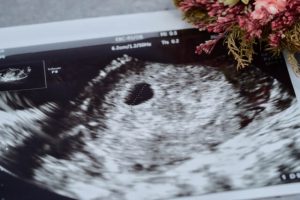Summary of This Article
Basal body temperature (BBT) refers to the body’s temperature at rest. Use a basal thermometer and measure your temperature immediately after waking up without getting out of bed. Insert the thermometer under your tongue right away. Record your BBT and connect the dots to create a graph. Even if your BBT graph is unstable, changes in temperature due to how you measure, the day’s weather, or your health condition will not prevent pregnancy. Managing insomnia and sleep disorders during pregnancy is crucial, with stress management being the most important aspect.
- What is Basal Body Temperature (BBT)
- Check Your Basal Body Temperature
- Common Basal Body Temperature Graphs
- The Relationship Between Menstruation and Basal Body Temperature
- Basic Basal Body Temperature Information You Should Know When Trying to Conceive
- What to Check if You Think You Might Be Pregnant
What is Basal Body Temperature (BBT)
First, basal body temperature (BBT) refers to the body’s temperature when we are at rest. It is not measured during activities like eating or exercising but rather when we are doing almost nothing. Only then can we accurately determine the BBT.
Body Factors Related to Basal Body Temperature
The female body until menopause is supported by the actions of the female hormones “estrogen” and “progesterone.”
When the activity of estrogen is dominant, it is called the “low temperature phase,” and when the activity of progesterone is dominant, it is called the “high temperature phase.”
In other words, by checking your basal body temperature daily, you can understand which female hormone is currently active in your body.
Information Obtained from Basal Body Temperature
Generally, a woman’s body enters the low temperature phase (when follicle-stimulating hormone is active) for about two weeks and then enters the high temperature phase (when luteinizing hormone is active) for another two weeks.
The low temperature phase includes the week during menstruation and the week after. The high temperature phase includes the week after ovulation and the week before menstruation. When basal body temperature rises, it indicates that menstruation will occur in approximately two weeks.
In terms of pregnancy, if the high temperature phase lasts for more than two weeks and menstruation does not occur, the likelihood of being pregnant increases.

Check Your Basal Body Temperature
What you need are a basal thermometer and a basal body temperature chart. Although regular thermometers can measure temperature, to check the menstrual cycle or pregnancy status, you need to measure subtle temperature differences like 0.3°C or 0.5°C. Therefore, be sure to prepare a basal thermometer.
A basal body temperature chart is a chart where you record the measured temperature. It can be purchased along with the basal thermometer at pharmacies or gynecological clinics.
Proper Method of Measuring Basal Body Temperature
The best time to measure basal body temperature is immediately after waking up. Without getting out of bed, place the thermometer under your tongue right away.
Best Time to Measure Basal Body Temperature
For accuracy, the morning is ideal. In contrast, measuring basal body temperature during the day or night is unsuitable due to significant temperature changes caused by activities such as eating or exercising.
How to Record Basal Body Temperature Chart
Here, don’t just write down the temperature; connect the points to create a graph. By checking the numbers along with the lines, it becomes easier to understand changes in basal body temperature.
In addition to the temperature, record the days when menstruation occurs, the state of menstruation, and sexual activity. This helps in better understanding changes in your physical condition, menstrual cycle, and signs of pregnancy.
Common Basal Body Temperature Graphs
So, let’s learn how to read a typical graph to check the movement of basal body temperature.
How to Read a Basal Body Temperature Graph
引用:Illustrated AC
By measuring your basal body temperature daily, you’ll notice that it is lower from menstruation until the ovulation period and higher from after ovulation until menstruation.
What are Low and High Temperature Phases? How Long Do They Typically Last?
Medically, the period when the temperature is low is called the low temperature phase, and the period when the temperature is high is called the high temperature phase.
Assuming a menstrual cycle of about four weeks, it is ideal to have two weeks for the low temperature phase and two weeks for the high temperature phase. Generally, it is expected that the low temperature phase and high temperature phase switch approximately every two weeks.
Unstable, Irregular, or Inconsistent Graphs
When checking the basal body temperature graph, you might sometimes feel that it doesn’t form a neat graph between the low and high temperature phases, or that the temperature differences are inconsistent and unstable.
Generally, as long as you can see distinct low and high temperature phases and occasional variations, there is no need to worry too much.
Even if there are low and high temperature phases, minor changes in temperature can occur due to daily weather conditions, changes in health, or the situation when measuring. If there are no irregularities in your menstrual cycle, there is usually no cause for concern.
On the other hand,
- If the low temperature phase continues without transitioning to the high temperature phase,
- If the high temperature phase does not stabilize,
- If there is no visible change between the low and high temperature phases,
it could indicate the possibility of conditions such as “luteal phase defect,” “thyroid hormone abnormalities,” or “anovulatory menstruation.” If you notice any of these signs, it is advisable to visit a medical institution early to determine the cause.
The Relationship Between Menstruation and Basal Body Temperature
Measuring your basal body temperature daily might feel cumbersome, but it offers the benefit of understanding your menstrual cycle.
Since women’s health often changes with the menstrual cycle, being aware of it in advance can help you lead a less stressful life both physically and mentally.
Basal Body Temperature Rises After Ovulation
As explained in the sections on the low temperature phase and high temperature phase, women experience periods of both low and high body temperatures.
Typically, the low temperature phase continues for about two weeks after menstruation, followed by ovulation, and then the high temperature phase begins.
During the high temperature phase, the body temperature remains approximately 0.3°C higher than during the low temperature phase for about two weeks. While individual variations exist, it is not uncommon for some women to have a body temperature close to 37°C.
Many women also experience symptoms such as fatigue, drowsiness, body heat, and increased appetite due to an increase in metabolism before menstruation as their body temperature rises.
After this period, the body temperature drops sharply, and menstruation begins. This cycle supports the menstrual cycle in women.
Possibility of Anovulatory Menstruation
If there is no change in basal body temperature even when menstruation occurs, there is a high possibility of anovulatory menstruation. Anovulatory menstruation is often associated with issues such as ovarian dysfunction or thyroid disorders, making early detection and treatment essential.
Basic Basal Body Temperature Information You Should Know When Trying to Conceive
Recording basal body temperature is not only useful for understanding the menstrual cycle but also for detecting signs of pregnancy.
Below is an explanation of how body temperature can indicate pregnancy.
Understand Your Basal Body Temperature Before Trying to Conceive
Generally, if pregnancy is a possibility, the high basal body temperature phase will continue. Normally, the high temperature phase lasts about two weeks, and if the brain does not detect signs of pregnancy, it signals the body to lower the temperature and induce menstruation.
However, during pregnancy, the fertilized egg needs to be nurtured, so the uterine lining must remain thick. This requires the continuous secretion of progesterone, keeping the body temperature elevated.
Basal Body Temperature Gradually Increases
Even if pregnancy occurs, the body temperature does not suddenly rise. As with a typical menstrual cycle, after ovulation, the luteal phase begins, leading to the high temperature phase. Over a few days, the body temperature gradually increases and then remains elevated.
What if Basal Body Temperature Doesn’t Rise? Pregnancy Possibility?
You might think that having a low basal body temperature makes it harder to get pregnant, but a low temperature doesn’t necessarily mean that pregnancy is difficult.
Even if your basal body temperature is low, as long as you can confirm both low and high temperature phases and ovulation is occurring, pregnancy is still very possible.
However, if the low temperature phase continues for an extended period or the high temperature phase ends in less than 10 days, it could be related to anovulation or luteal phase defect. In such cases, it is advisable to visit a medical institution.
Pregnancy Possibility Even with an Unstable Graph
Even if your basal body temperature graph is unstable, variations in temperature due to the method of measurement, the day’s weather, or your health condition do not prevent pregnancy.
Take the changes in basal body temperature with a grain of salt, and continue recording it patiently over time.
Continuous High Temperature Phase Could Indicate Pregnancy?
During a regular menstrual cycle, the high temperature phase lasts for about two weeks. If menstruation does not occur and the body does not shift to the low temperature phase, consider the possibility of pregnancy. A pregnancy test or a visit to an obstetrician-gynecologist can confirm whether you are pregnant.
At the same time, check your health for signs of pregnancy. Pregnancy is established when the fertilized egg implants in the uterus about a week after fertilization.
Signs to watch for include lower back pain, changes in vaginal discharge, implantation bleeding, and missed periods. These indicators can help you recognize the possibility of pregnancy.
What to Check if You Think You Might Be Pregnant
If you are hoping to conceive, you will want to identify the signs as accurately as possible. Using basal body temperature tracking and pregnancy tests can help confirm your pregnancy.
Check if the High Temperature Phase is Longer Than Usual on Your Basal Body Temperature Graph
First, check your basal body temperature graph to see if the high temperature phase lasts for more than two weeks.
If the high temperature phase, similar to the premenstrual phase, continues for over two weeks, consider the possibility of pregnancy.
You might feel anxious about the instability of your body temperature during pregnancy, but it is not necessary to measure your temperature during pregnancy.
During pregnancy, body temperature often does not remain stable, and there are no clear trends such as “when the high temperature phase starts” or “when it decreases.”
Instead of focusing too much on changes in basal body temperature, prioritize overall health management during pregnancy.
Check with a Pregnancy Test
A pregnancy test can also determine if you are pregnant.
However, pregnancy tests can only detect pregnancy from the fourth week after conception. While you can purchase these tests over the counter, for greater accuracy, it is recommended to have a test done at a medical institution. You can also confirm a positive result with an over-the-counter test and then visit a medical institution.
Additionally, even if the pregnancy test shows a negative result, there is still a possibility that you might be pregnant. Therefore, visiting a medical institution is essential.

What Can NIPT (Non-Invasive Prenatal Testing) Detect?
Additionally, to check the health and developmental status of the unborn baby, taking NIPT (Non-Invasive Prenatal Testing) can be helpful in preparing during pregnancy.
With NIPT (Non-Invasive Prenatal Testing),
- The presence of Down syndrome (trisomy 21), trisomy 18, or trisomy 13, which can affect health and development
- Chromosomal disorders
- Sex chromosomes
These can be checked with a simple test. After confirmation, some testing facilities offer support from specialized counselors. If desired, it is advisable to arrange this support in advance.
When Can NIPT (Non-Invasive Prenatal Testing) Be Taken?
NIPT (Non-Invasive Prenatal Testing) can be taken immediately after confirming the pregnancy with an ultrasound. Taking the test earlier might not yield accurate results. When planning to take NIPT (Non-Invasive Prenatal Testing), ensure you accurately confirm the gestational week to schedule the test at the appropriate time.
Article Editorial Supervisor

Dr Hiroshi Oka
NIPT specialist clinic, MD
Graduated from Keio University, School of Medicine
 中文
中文






















